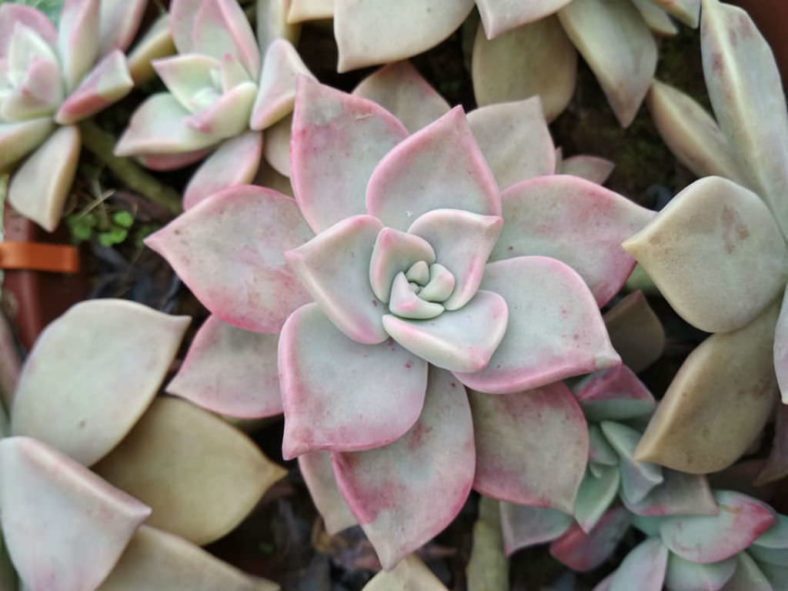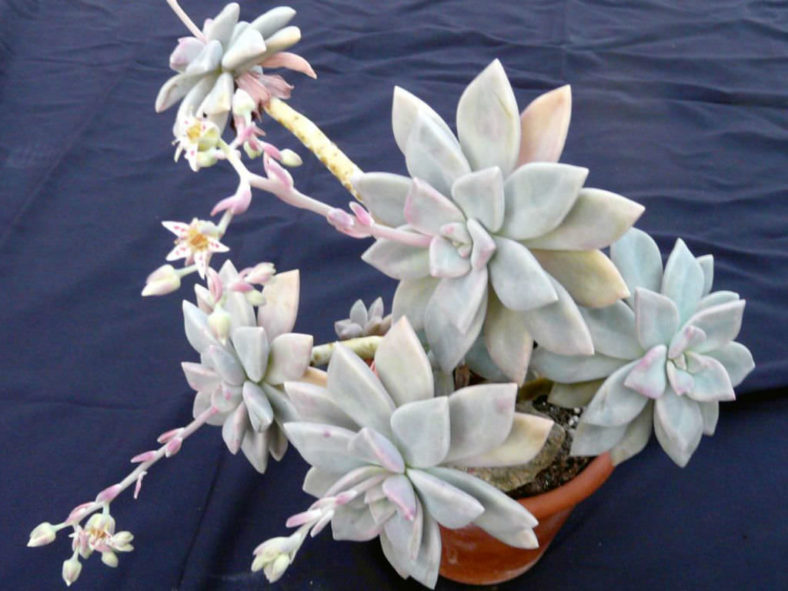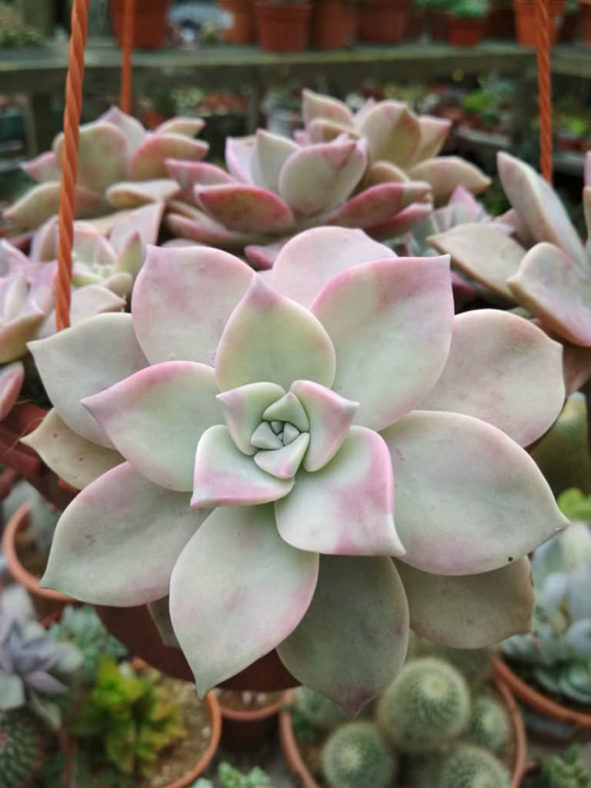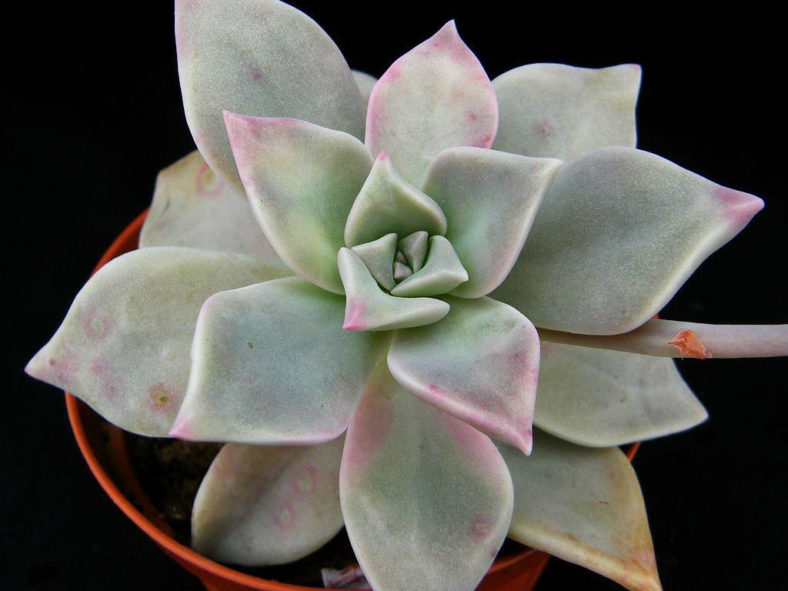Scientific Name
Graptopetalum 'Purple Haze'
Scientific Classification
Family: Crassulaceae
Subfamily: Sedoideae
Tribe: Sedeae
Subtribe: Sedinae
Genus: Graptopetalum
Origin
Graptopetalum 'Purple Haze' is a hybrid created by Steve Jankalski. It results from a cross between Graptopetalum paraguayense and Graptopetalum superbum.
Description
Graptopetalum 'Purple Haze' is a gorgeous clump-forming succulent with sprawling stems that bear rosettes of plump leaves at the end. The rosettes can reach a diameter of 4 inches (10 cm). The leaves are glaucous grey with raspberry blotches that appear during winter.
Sometimes, the flowers of this hybrid are not much different from those of its parent, Graptopetalum paraguayense. However, Graptopetalum paraguayense may have white flowers almost without flecks, while Graptopetalum 'Purple Haze' always has flowers with red flecks.
Graptopetalum 'Purple Haze' is often mistaken for Graptopetalum 'Victor Kane' but can be distinguished by its thinner leaves with a slightly glossy surface and the red flecks on the petals that are thinner and less pronounced. However, there are seasons when these two hybrids are impossible to tell apart and seasons when the difference is more prominent.

Hardiness
USDA hardiness zones 9b to 11b: from 25 °F (−3.9 °C) to 50 °F (+10 °C).
How to Grow and Care
The rules for Graptopetalums care are similar to those for most succulents. All require lots of sunlight to look their best. In addition, they require gritty, porous soil with excellent drainage. Water your Graptopetalums regularly over the summer, letting the soil dry out between waterings. Minimal water is required over winter. Overwatering is a cause of root rots, and the plant can get several pest infestations. Fertilize once during the growing season with a balanced fertilizer diluted to 1/4 strength.
Graptopetalums are generally easily propagated by seeds, leaf cuttings, or offsets. Any rosette that breaks off can root and start a new plant. Even a leaf that drops off will quickly root below the parent plant and produce a new rosette. The new plant feeds off the leaf until it shrivels and falls off. By then, the new little plant had rooted and sprouted new leaves.
See more at How to Grow and Care for Graptopetalum.
Links
- Back to genus Graptopetalum
- Succupedia: Browse succulents by Scientific Name, Common Name, Genus, Family, USDA Hardiness Zone, Origin, or cacti by Genus
Photo Gallery
Click on a photo to see a larger version.


